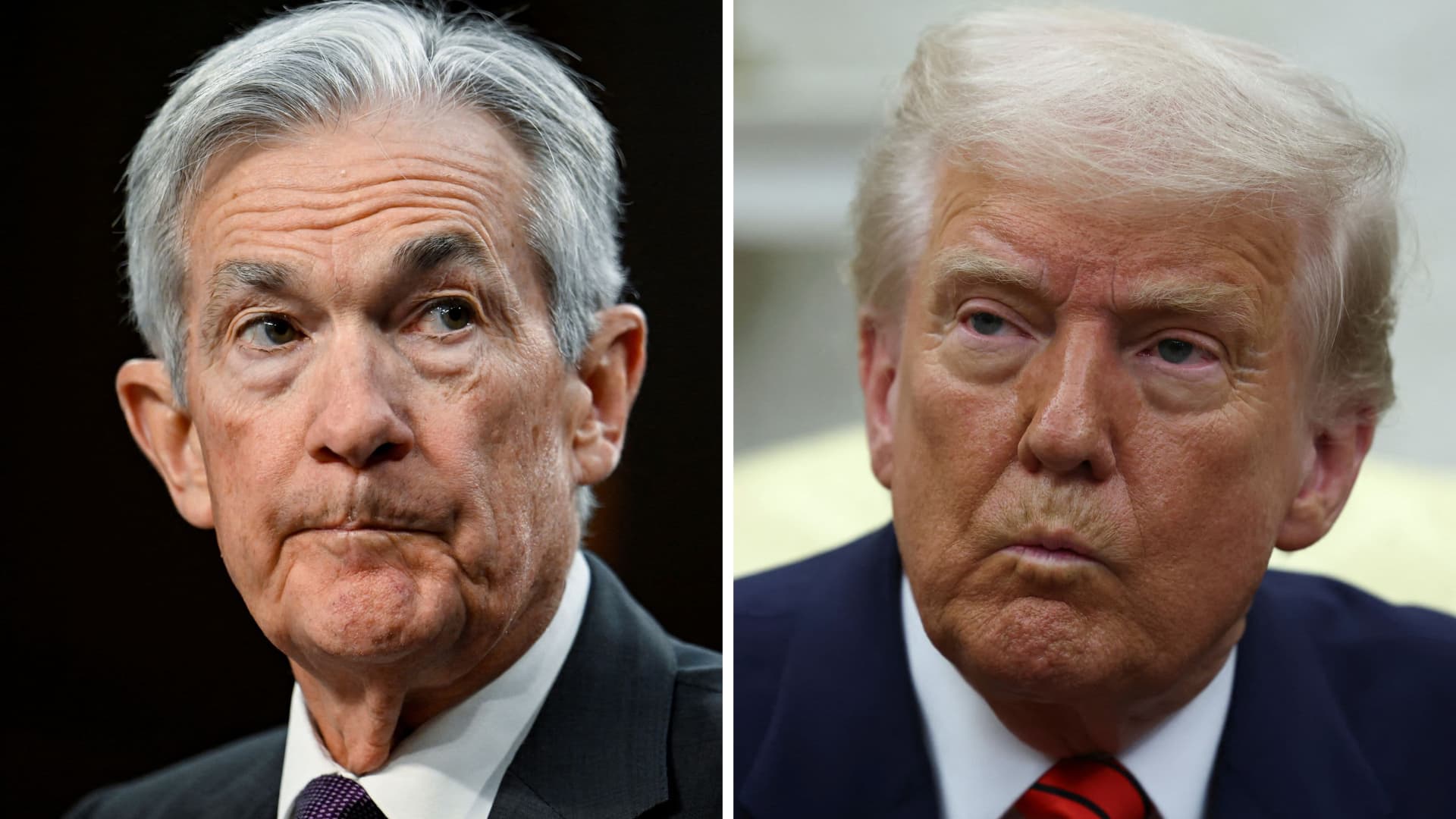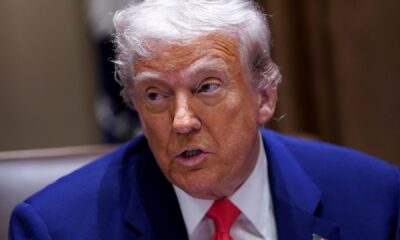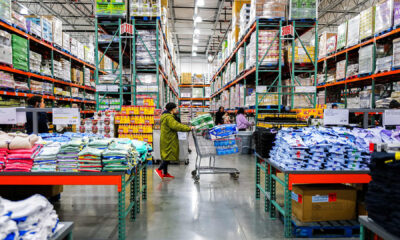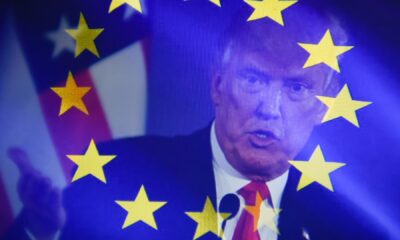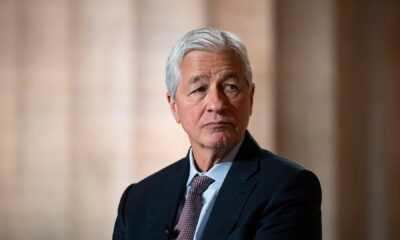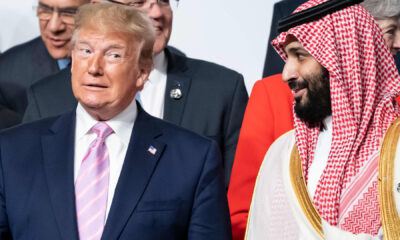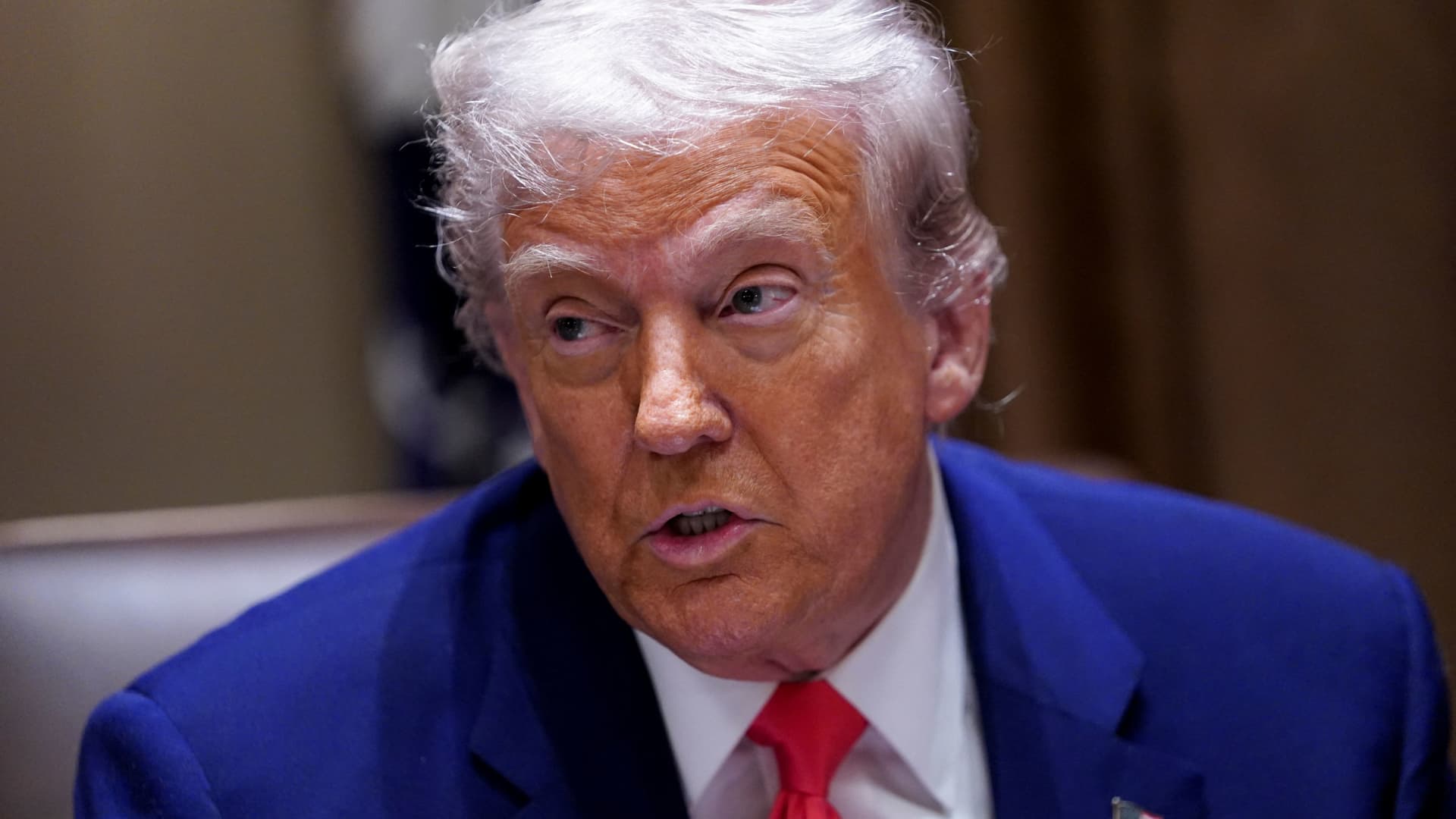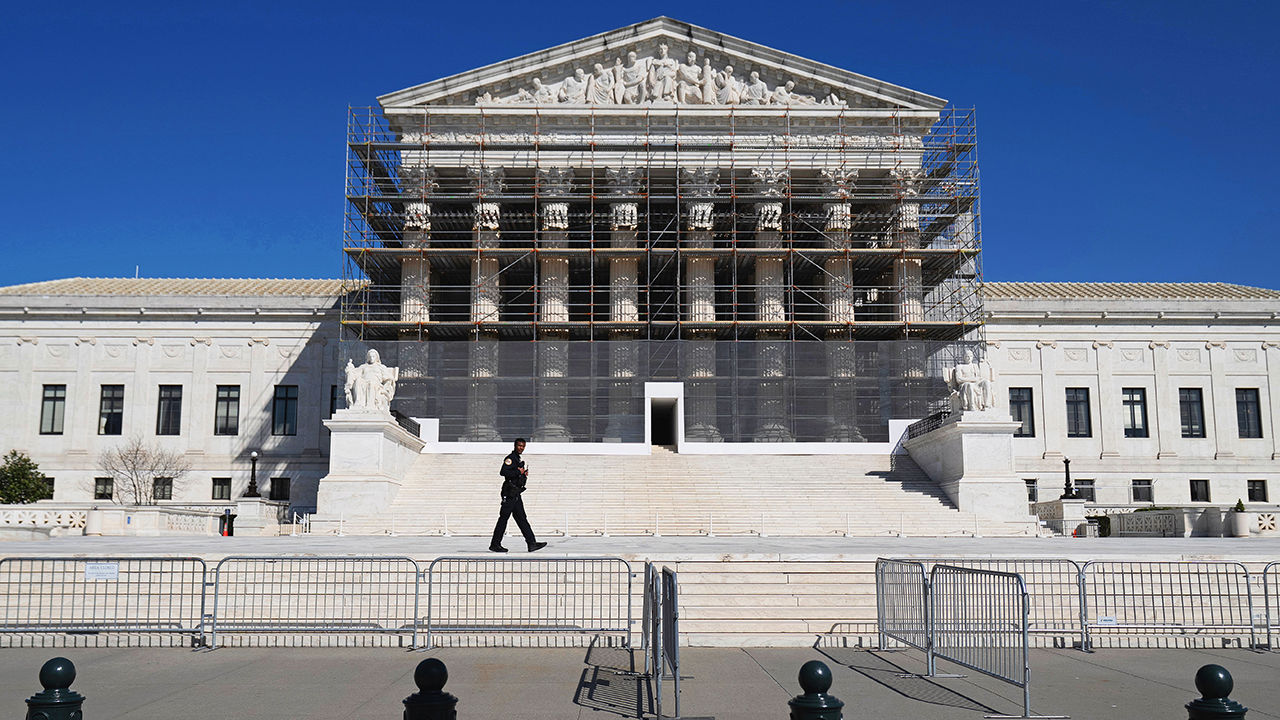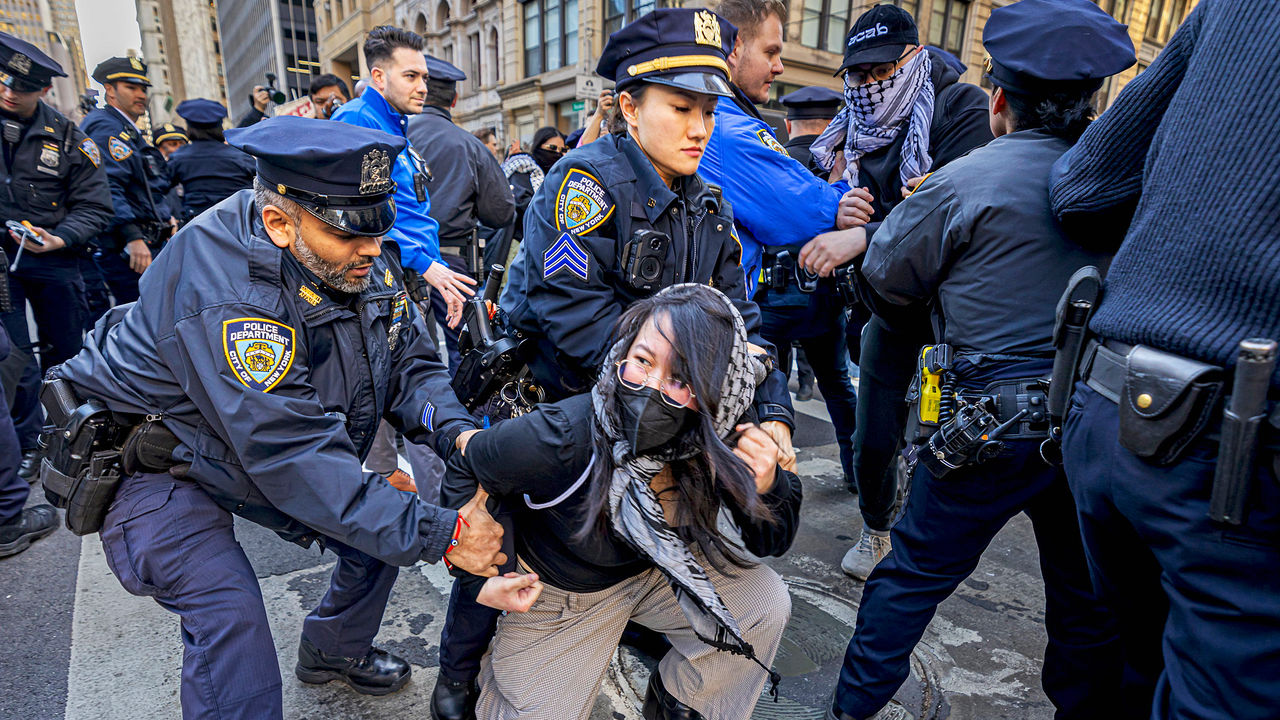U.S. Federal Reserve Chair Jerome Powell and U.S. President Donald Trump.
Craig Hudson | Evelyn Hockstein | Reuters
Now that President Donald Trump has set out his landmark tariff plans, the Federal Reserve finds itself in a potential policy box to choose between fighting inflation, boosting growth — or simply avoiding the fray and letting events take their course without intervention.
Should the president hold fast to his tougher-than-expected trade policy, there’s a material risk of at least near-term costs, namely the potential for higher prices and a slowdown in growth that could turn into a recession.
For the Fed, that presents a potential no-win situation.
The central bank is tasked with using its policy levers to ensure full employment and low prices, the so-called dual mandate of which policymakers speak. If tariffs present challenges to both, choosing whether to ease to support growth or tighten to fight inflation won’t be easy, as each courts its own peril.
“The problem for the Fed is that they’re going to have to be very reactive,” said Jonathan Pingle, chief U.S. economist at UBS. “They’re going to be watching prices rise, which might make them hesitant to respond to any growth weakness that materializes. I think it’s certainly going to make it very hard for them to be preemptive.”
Under normal conditions, the Fed likes to get ahead of things.
If it sees leading gauges of unemployment perk up, the Fed will cut interest rates to ease financial conditions and give companies more incentive to hire. If it sniffs out a coming rise in inflation, it can raise rates to dampen demand and bring down prices.
So what happens when both things occur at the same time?
Risks to waiting
The Fed hasn’t had to answer that question since the early 1980s, when then-Chair Paul Volcker, faced with such stagflation, chose to uphold the inflation side of the mandate and hike rates dramatically, tilting the economy into a recession.
In the current case, the choice will be tough, particularly coming on the heels of how the Jerome Powell-led central bank was flat-footed when prices started rising in 2021 and he and his colleagues dismissed the move as “transitory.” The word has been resurrected to describe the Fed’s general view on tariff-induced price increases.
“They do risk getting caught offsides with the potential magnitude of this kind of price increase, not unlike what happened in 2022 where, they might might feel the need to respond,” Pingle said. “In order for them to respond to weakening growth, they’re really going to have to wait until the growth does weaken and makes the case for them to move.”
To be sure, the Trump administration sees the tariffs as pro-growth and anti-inflation, though officials have acknowledged the potential for some bumpiness ahead.
“It’s time to change the rules and make the rules be stacked fairly with the United States of America,” Commerce Secretary Howard Lutnick told CNBC in a Thursday interview. ” We need to stop supporting the rest of the world and start supporting American workers.”
However, that could take some time as even Lutnick acknowledged that the administration is seeking a “re-ordering” of the global economic landscape.
Like many other Wall Street economists, Pingle spent the time since Trump announced the new tariffs Wednesday adapting forecasts for the potential impact.
Bracing for inflation and flat growth
The general consensus is that unless the duties are negotiated lower, they will take prospects for economic growth down to near-zero or perhaps even into recession, while putting core inflation in 2025 north of 3% and, according to some forecasts, as high as 5%. With the Fed targeting inflation at 2%, that’s a wide miss for its own policy objective.
“With price stability still not fully achieved, and tariffs threatening to push prices higher, policymakers may not be able to provide as much monetary support as the growth picture requires, and could even bind them from cutting rates at all,” wrote Seema Shah, chief global strategist at Principal Asset Management.
Traders, however, ramped up their bets that the Fed will act to boost growth rather than fight inflation.
As is often the reaction during a market wipeout like Thursday’s, the market raised the implied odds that the Fed will cut aggressively this year, going so far as to put the equivalent of four quarter-percentage-point reductions in play, according to the CME Group’s FedWatch tracker of futures pricing.
Shah, however, noted that “the path to easing has become narrower and more uncertain.”
Fed officials certainly haven’t provided any fodder for the notion of rate cuts anytime soon.
In a speech Thursday, Vice Chair Philip Jefferson stuck to the Fed’s recent script, insisting “there is no need to be in a hurry to make further policy rate adjustments. The current policy stance is well positioned to deal with the risks and uncertainties that we face in pursuing both sides of our dual mandate.”
Taking the cautious tone a step further, Governor Adriana Kugler said Wednesday afternoon — at the same time Trump was delivering his tariff presentation in the Rose Garden — that she expects the Fed to stay put until things clear up.
“I will support maintaining the current policy rate for as long as these upside risks to inflation continue, while economic activity and employment remain stable,” Kugler said, adding she “strongly supported” the decision in March to keep the Fed’s benchmark rate unchanged.
Get Your Ticket to Pro LIVE
Join us at the New York Stock Exchange!
Uncertain markets? Gain an edge with CNBC Pro LIVE, an exclusive, inaugural event at the historic New York Stock Exchange.
In today’s dynamic financial landscape, access to expert insights is paramount. As a CNBC Pro subscriber, we invite you to join us for our first exclusive, in-person CNBC Pro LIVE event at the iconic NYSE on Thursday, June 12.
Join interactive Pro clinics led by our Pros Carter Worth, Dan Niles, and Dan Ives, with a special edition of Pro Talks with Tom Lee. You’ll also get the opportunity to network with CNBC experts, talent and other Pro subscribers during an exciting cocktail hour on the legendary trading floor. Tickets are limited!
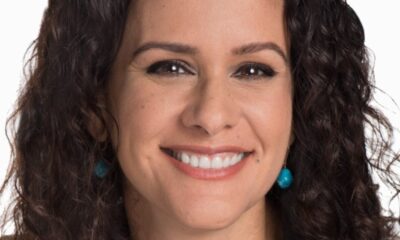
 Accounting7 days ago
Accounting7 days ago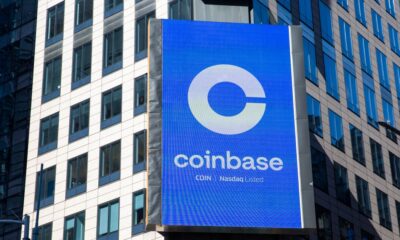
 Accounting1 week ago
Accounting1 week ago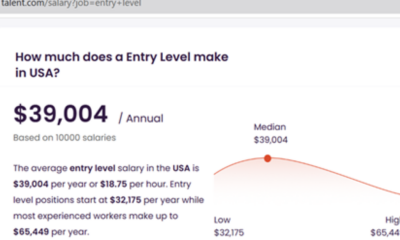
 Accounting1 week ago
Accounting1 week ago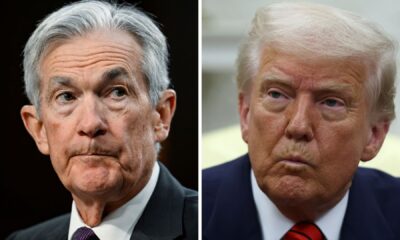
 Economics7 days ago
Economics7 days ago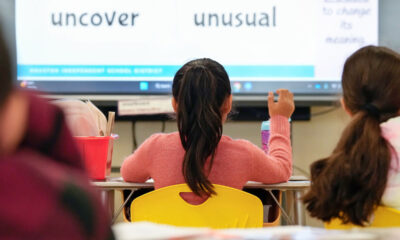
 Economics5 days ago
Economics5 days ago
 Personal Finance1 week ago
Personal Finance1 week ago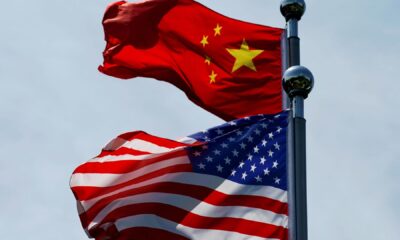
 Economics7 days ago
Economics7 days ago
 Personal Finance1 week ago
Personal Finance1 week ago
